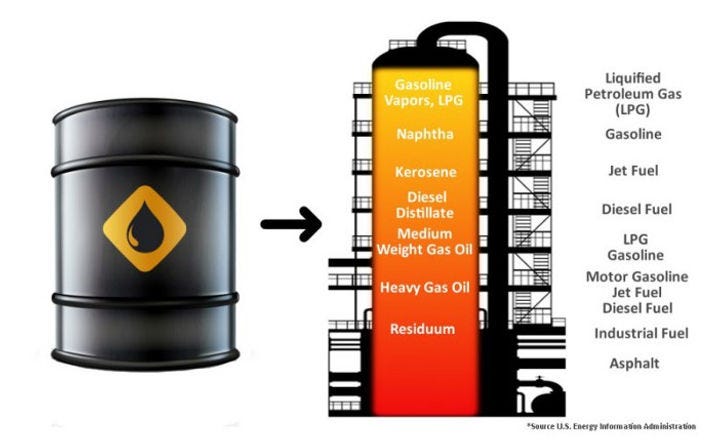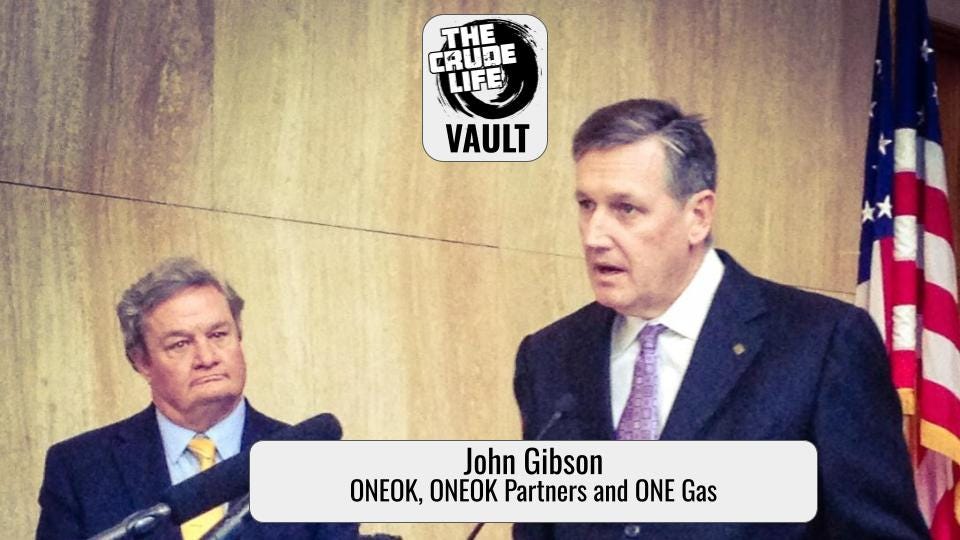Shah’s Shakedown, Barnett Boom Plateaus and DAPL's Resilience
Today in Energy History for Monday June 30, 2025
Welcome to another edition of Petro Playback, where we rewind the oil-stained pages of history to rediscover the moments, the molecules, and the communities that have powered the world beneath our feet.
It’s June 30, and while most are watching the fiscal year close out, we’re looking back at a few black-gold benchmarks that shaped this global juggernaut called oil and gas. Whether it's geopolitical shocks, scientific breakthroughs, or community resilience, petroleum has always been more than a commodity—it’s a catalyst.
Let’s start with Event Number One—June 30, 1973: The Shah’s Shakedown.
On this day, Iran, under the rule of Mohammad Reza Shah Pahlavi, flexed its petroleum muscle by aggressively renegotiating oil revenue terms with foreign companies operating under the consortium agreement. Iran’s national oil company demanded a greater share of revenue, sending a shockwave through OPEC nations and pushing Western energy companies into the geopolitical hot seat. This moment would light the fuse for the OPEC oil embargo just months later, proving that energy isn’t just extracted—it’s negotiated.
Event Number Two—June 30, 1980: Nigeria Joins the Mega League.
Nigeria, rich in crude and ambition, officially surpassed 2 million barrels per day in oil production for the first time. This milestone positioned the West African nation as a top-tier exporter, particularly to the U.S. and Europe. While this growth sparked rapid economic potential, it also ignited debates about the "resource curse," laying bare the challenges of managing oil wealth in a developing democracy. Today, the legacy of that milestone continues to ripple through energy politics and ESG debates.
Event Number Three—June 30, 2005: The Barnett Boom Begins to Plateau
The Barnett Shale in Texas, widely seen as the birthplace of modern fracking, marked its first recorded plateau in daily production on this date. After years of soaring output fueled by horizontal drilling and hydraulic fracturing, natural gas volumes began to level off, signaling not a bust—but a pivot. The industry, nimble and hungry, would soon shift attention to the Marcellus and later Permian Basin plays, refining completion technology in the process. June 30, 2005, was less about the end and more about the evolution of America’s shale revolution.
Event Number Four—June 30, 2021: The Dakota Resilience
Following a series of legal challenges to the Dakota Access Pipeline, the U.S. Supreme Court declined to hear an appeal that would have shut the pipeline down. Though environmental groups claimed a temporary win earlier that year, by June 30 the oil kept flowing—750,000 barrels per day—through North Dakota’s economic lifeline. The decision fortified North Dakota's place as the second-largest oil-producing state in the country and served as a symbolic stand for midstream infrastructure in the modern era.
Now, let’s take a breather from history and focus on something we all use—but rarely think about.
Today’s Petro Product Spotlight: Contact Lenses
That’s right—those tiny, transparent corrective miracles are petroleum-powered. Soft contact lenses are made from hydrogel and silicone polymers—both derived from petroleum byproducts. These materials allow oxygen to permeate the eye and retain moisture. Without oil, your vision might still be stuck in the 1970s—behind thick glasses, with fewer options and more fog. It’s a sharp reminder: petroleum doesn’t just fuel your car—it focuses your world.
Time for a Did You Know moment that might just drill its way into your brain.
Did You Know?
One barrel of crude oil—42 gallons—produces only about 19 gallons of gasoline. The rest? It becomes over 6,000 byproducts, from asphalt to aspirin. Crude oil is essentially a complex hydrocarbon soup, and through fractional distillation, we separate it by temperature into valuable components. The most surprising? Ethylene, a gas used to manufacture plastics, antifreeze, and even medical devices. Oil isn't just burned—it's built upon.
And finally, we shine our spotlight on a rural community that knows oil and gas like kinfolk.
Crude Community Highlight: Rangely, Colorado
Nestled in Rio Blanco County, Rangely may not be on every map, but in the petroleum world, it’s a landmark. Home to one of the oldest and largest oil fields in the Rocky Mountain region, Rangely’s boom began in the 1940s with Chevron (then Standard Oil). By the 1950s, it was producing over 82,000 barrels per day. More impressively, Rangely was an early adopter of CO₂ enhanced oil recovery, using gas injection to coax more oil from aging wells—a method that helped shape modern tertiary recovery practices. Even today, this town of fewer than 2,500 residents continues to punch above its weight, symbolizing innovation and resilience in rural energy.
The Crude Life VAULT: John Gibson explains the difference between natural gas in the Bakken and Texas.
At the time of the interview, Gibson was non-executive chairman of the board of ONEOK, ONEOK Partners and ONE Gas. He most recently was chairman and chief executive officer of both ONEOK and ONEOK Partners after serving as chairman, president and chief executive officer of ONEOK and ONEOK Partners.
Gibson joined ONEOK in 2000 as president of energy, responsible for the company’s natural gas gathering and processing, and transportation and storage businesses. In 2006, he was named president and chief operating officer of ONEOK Partners, the master limited partnership that contains the midstream natural gas and natural gas liquids businesses. He was elected chief executive officer of ONEOK and president and chief executive officer of ONEOK Partners in January 2007, becoming chairman of ONEOK Partners later that year. In January 2010, he became president of ONEOK; and in May 2011, he became chairman.
So whether it’s geopolitics in Tehran, innovation in Texas, or clarity in your eyes, June 30 reminds us: the oil and gas story is as vast as it is intricate, as human as it is technical.
That’s today’s Petro Playback, signing off until tomorrow. Stay focused, stay informed—and never forget, petroleum isn’t just power, it’s history in motion.
Petro Playback prepared and written by Jason Spiess. Spiess is an multi-award-winning journalist, entrepreneur, producer and content consultant. Spiess, who began working in the media at age 10, has over 35 years of media experience in broadcasting, journalism, reporting and principal ownership in media companies. Spiess is currently the host of several newsmagazine programs that air across a 22 radio stations and podcasts worldwide through podcast platforms, as well as a social media audience of over 400K followers.
Everyday your story is being told by someone. Who is telling your story? Who are you telling your story to?
Email your sustainable story ideas, professional press releases or podcast submissions to thecontentcreationstudios(AT)gmail(DOT)com.
CLICK HERE FOR SPECIAL PARAMOUNT + DISCOUNT LINK
The Mission: Impossible collection is now streaming on Paramount+.
Watch Tom Cruise as secret agent Ethan Hunt and his team take on unimaginable assignments to save the world through daring stunts and relentless determination in the iconic movie collection.
Paramount+ offers its subscribers a plethora of quality content.
From instant classic films to banger TV shows like 1883 and Tommy Boy, there’s no shortage of entertainment to explore.
How about the new series Happy Face? It’s getting fabulous reviews.
Start Streaming Today!











